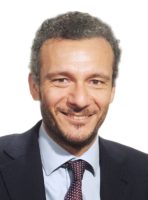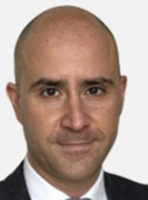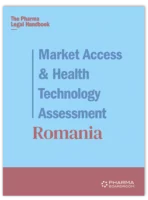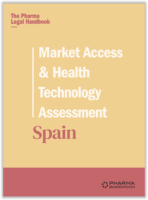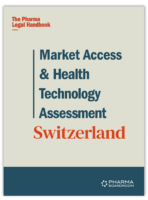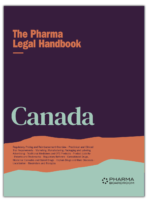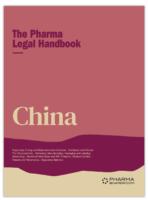Regulatory, Pricing and Reimbursement Overview
/ Italy
Regulatory, pricing and reimbursement overview in Italy – a legal guide. Prepared in association with Baker Mckenzie, a leading law firm in Italy, this is an extract from The Pharma Legal Handbook: Italy, available to purchase here for GB 119.
1. What are the regulatory authorities with jurisdiction over drugs, biological, and medical devices in your country?
In Italy, the regulatory authorities with jurisdiction over drugs, biologicals, and medical devices are:
• the Ministry of Health (“MoH”), which generally governs the Italian healthcare system and has a more specific role in relation to the regulatory framework concerning medical devices; and
• the Italian Medicine Agency (“AIFA”), a public entity under the supervision of the MoH, which is responsible, amongst other things, for the manufacturing, distribution, import, promotion, advertising, pricing and reimbursement of medicines, including biological drugs.
2. What is the regulatory framework for the authorization, pricing, and reimbursement of drugs, biological, and medical devices?
a.Medicinal products
As regards medicinal products, including biological drugs, the relevant legislative and regulatory framework mainly consists of:
• Regulation (EC) No. 726/2004 laying down EU procedures for the authorization and supervision of medicinal products;
• Legislative Decree No. 219/2006 (the “Pharma Code”) implementing Directive 2001/83/EC relating to medicinal products for human use;
• Law No. 326/2003 with entrusts the AIFA with the task of negotiating the cost of medicines reimbursed by the National Healthcare System (“NHS”) and, more generally, monitoring prices of medicinal products;
• Decree of the MoH dated August 2, 2019 setting forth the criteria and methods according to which the AIFA establishes, through negotiation, the prices of medicinal products reimbursed by the NHS; and
• Law Decree No. 87/2005 governing the price of medicinal products not reimbursed by the NHS.
b.Medical Devices
With respect to medicinal devices, the relevant legislative and regulatory framework mainly consists of:
• Regulation (EU) No. 2017/745 on medical devices and active implantable medical devices (“MDR”);
• Regulation (EU) No. 2017/746 on in vitro diagnostic medical devices (“IVDR”);
• Legislative Decree No. 46/1997, implementing Directive 93/42/EEC on medical device;
• Legislative Decree No. 507/1992, implementing Directive 90/385/EEC on active implantable medical devices; and
• Legislative Decree No. 332/2000, implementing Directive 98/79/EC on in vitro diagnostic medical devices.
In Italy, there are no specific provisions of law governing the pricing and reimbursement of medical devices. Rather, medical devices are directly purchased by the NHS in the context of tender procedures governed by Italian public procurement laws. These laws set forth specific rules governing the award of public supply contracts based on the principles of equal treatment, transparency and free competition and the performance of same pursuantto ad hoc public procurement rules.
Contracting authorities award the relevant supply contract either on the basis of the lower price criteria (option more frequently used for low/medium-technology products) or the most economically advantageous offer (option more frequently used for medical devices characterized by a higher technological level). Exceptions to said rules may apply with respect to medical devices that can only be supplied by one economic operator due to technical reasons or IP rights protection, for which contracting authorities can allow one-to-one negotiated procedures (e.g. in case of urgency).
3. What are the steps to obtain authorization to develop, test, and market a product?
a. Medicinal products
In Italy the development and testing of medicinal products is mainly governed by Legislative Decree No. 211/2003 and Legislative Decree No. 200/2007 on clinical trials on medicinal products for human use according to which trials are subject to the prior authorization issued by the AIFA and the positive opinion of the Ethics Committee(s) relating to the clinical site(s) where same trials are conducted. The above-mentioned Legislative Decrees also set forth specific rules on good clinical practice, informed consent, responsibilities of sponsors and investigators and other entities involved in the clinical trial (e.g., contract research organizations). Less stringent rules apply to observational studies, according to the AIFA’s Resolution dated 20 March 2008.
As to the authorization to market products, under Italian law the approval pathway for new drug applications does not differ from that ordinarily envisaged for all medicines, according to the Pharma Code. That said, simplified procedure for the authorization of generic drugs as well as schemes for expedited approval and programs to encourage the development of new drugs are available.
Under Italian law, there are two main routes for authorizing medicines: a centralized route, governed by Regulation (EC) No. 726/2004 (i.e. the centralized authorization procedure), and a national route, regulated by the Pharma Code, which in turn comprises three different authorization procedures, namely the national procedure, the mutual recognition procedure and the decentralized procedure.
Pursuant to the centralized authorization procedure, pharmaceutical companies submit a single marketing-authorization application to the European Medicines Agency (the “EMA”). The advantage of this procedure is to allow the marketing-authorization holder to market the medicine and make it available to patients and healthcare professionals throughout the EU on the basis of a single marketing authorization. Today, the great majority of new, innovative medicines pass through the centralized authorization procedure in order to be marketed in the EU .
In the EU, marketing authorization applications for biotechnology-derived medicinal products, including biosimilars , are by law reviewed centrally by the EMA. The European Commission issues the decisions concerning the authorization of these medicinal products on the basis of the scientific opinions from the EMA. The resulting marketing authorization is valid in all EU Member States. Other biological medicinal products can also be authorized through the national, mutual recognition or decentralized procedure on the basis of the same scientific and regulatory standards required under the centralized procedure before the EMA.
With specific regard to biosimilars, developers are required to demonstrate through comprehensive comparability studies with the reference biological medicine that:
• their biological medicine is highly similar to the reference medicine, notwithstanding natural variability inherent to all biological medicines;
• there are no clinically meaningful differences between the biosimilar and the reference medicine in terms of safety, quality, and efficacy.
Biosimilar development relies heavily on comparability studies to establish similarity to the reference product. This involves a comprehensive head-to-head comparison of the biosimilar and the reference medicine.
b. Medical devices
To obtain the CE marking for a medical device, the manufacturer must demonstrate that the device complies with the safety and performance requirements laid down in the MDR under the normal conditions of its intended use. To this end, manufactures must provide adequate clinical evidence that, in most cases, are gathered through the conduct of clinical investigations. From May 26, 2021, clinical investigations on medical devices are governed by the MDR according to which ingestions are subject to the prior authorization issued by the competent authority of the Member State(s) in which the same investigation is to be conducted (in Italy, the MoH) and the positive opinion of the Ethics Committee(s) of the concerned clinical site(s).
No prior authorization is required for the marketing of medical devices. However, medical devices can only be marked if they have the CE Marking, that is a marking that the relevant manufacturer affixes on the device to confirm its compliance with the safety and performance requirements set out in the MDR or IVDR, as applicable, and other related EU rules.
Medical devices are classified in four main classes: I (lowest risk), IIa, IIb, and III (highest risk) according to a risk-based approach that takes into account the vulnerability of the human body and the potential risks associated with the devices. This approach uses a set of criteria that can be combined in various ways in order to determine classification, such as duration of contact with the body, degree of invasiveness, local vs. systemic effect, potential toxicity, the part of the body affected by the use of the device and if the device depends on a source of energy.
Determining the risk class of a medical device is essential in specifying the steps required for CE Marking, especially in terms of the choice of conformity assessment procedure and clinical requirements. Indeed, the assessment of the conformity of a device for CE Marking varies according to the risk class and specific features of the respective device. The intervention of a notified body is needed for all high-risk class devices, for which there is also a clinical evaluation consultation procedure to be carried out by an independent expert panel, based on the clinical evaluation assessment report of the same notified body.
In addition to the CE Marking, medical devices placed on the Italian market must be notified to the MoH and registered in an institutional register of medical devices.
4. What are the approximate fees for each authorization?
Both the EMA and the AIFA charge fees for applications for marketing authorization. Those due to the AIFA are established by the Decree of the Ministry of Health dated December 6, 2016. Said Decree also provides that, with respect to applications filed through the decentralized procedure where Italy acts as Reference Member State, fees are increased by 20%, whereas applications filed through the mutual recognition procedure where Italy acts as Reference Member State benefit from a 80% reduction. Fees are adjusted every year for inflation. Fee reductions and incentives are available for micro, small and medium-sized enterprises, designated orphan drugs, multiple applications on usage patent grounds and other classes of application.
5. For how long are marketing authorizations/registrations valid? How are marketing authorizations/registrations renewed?
Both national and centralized marketing authorizations for medicinal products are valid for five years. They can be renewed after 5 years from the first authorization on the basis of a re-evaluation of the risk-benefit ratio carried out by the AIFA or the EMA. Before the expiration of the validity of the MA, the relevant holder must submit a renewal application enclosing an updated version of the drug dossier covering the quality, safety and efficacy profiles. After renewal, the authorization is valid indefinitely, unless otherwise specified by the competent authority, which may decide to proceed with an additional five-year renewal.
6. How does the authorization process differ between brand-name products and generic products? Are there differences for local manufacturers versus foreign-owned manufacturers?
Under Italian law, generic drugs benefit from a simplified authorization procedure. Pursuant to the Pharma Code, a generic drug is a medicinal product which has the same qualitative and quantitative composition in active principles and the same pharmaceutical form of the reference medicinal product, and whose bioequivalence with the latter has been demonstrated by appropriate bioavailability tests. In other words, generic drugs are those medicinal products that, on the basis of predetermined, objective and measurable scientific and methodological criteria, can be regarded as equivalent, in terms of quality, safety and efficacy, to reference originator drugs developed and authorized following clinical studies which confirmed the relevant prerogatives.
More in particular, art. 10 of the Pharma Code establishes the principle that an applicant for a marketing authorization shall not be required to provide the results of pre-clinical tests and of clinical trials if he can demonstrate that the concerned product is a generic of a reference medicinal product which is, or has been, authorized in Italy of in the EU for at least 8 years. A generic drug so authorized shall not, however, be placed on the market until 10 years have elapsed from the initial authorization of the reference product (so-called “market exclusivity”); a clear reference to such a prohibition is included in the provision granting the relevant marketing authorization. Said 10-year period can be extended to a maximum of 11 years if, during the first 8 years of those ten years, the marketing authorization holder (“MAH”) obtains an authorization for one or more new therapeutic indications which, during the scientific evaluation prior to their authorization, are held to bring a significant clinical benefit in comparison with existing therapies.
In this respect, it is noteworthy to mention that, under Italian law, the applicant for a marketing authorization for a generic drug may carry out tests necessary for submitting the file before the end of the exclusivity period of the originator without this being regarded as an infringement of the rules on the protection of industrial and commercial property. Notwithstanding the foregoing, art. 11 of Law Decree No. 158/2012, provides that generic drugs shall not be reimbursed by the NHS before the expiration of the patent/supplementary protection of the originator.
There is no difference for local manufacturers versus foreign-owned manufacturers.
7. How are combination products (drug + drug, drug + biologic, drug + device, biologic + device, drug + biologic + device) regulated?
Art. 1(8) of the MDR provides that any device which, when placed on the market or put into service, incorporates, as an integral part, a substance which, if used separately, would be considered to be a medicinal product, including a medicinal product derived from human blood or human plasma, and that has an action ancillary to that of the device, shall be assessed and authorized in accordance with the MDR. However, if the action of that substance is principal and not ancillary to that of the device, the integral product shall be governed by Directive 2001/83/EC or Regulation (EC) No. 726/2004 on medicinal products for human use, as applicable. In that case, the relevant general safety and performance requirements set out in Annex I to the MDR shall apply as far as the safety and performance of the device part are concerned.
Under Article (9) of the MDR, any device which is intended to administer a medicinal product shall be governed by the MDR, without prejudice to the provisions of Directive 2001/83/EC and of Regulation (EC) No. 726/2004 with regard to the medicinal product. However, if the device intended to administer a medicinal product and the medicinal product are placed on the market in such a way that they form a single integral product which is intended exclusively for use in the given combination and which is not reusable, that single integral product shall be governed by Directive 2001/83/EC or Regulation (EC) No. 726/2004, as applicable. In that case, the relevant general safety and performance requirements set out in Annex I to the MDR shall apply as far as the safety and performance of the device part of the single integral product are concerned.
Lastly, Article 1(10) of the MDR establishes that any device which, when placed on the market or put into service, incorporates, as an integral part, non-viable tissues or cells of human origin or their derivatives that have an action ancillary to that of the device shall be assessed and authorized in accordance with the MDR. In that case, the provisions for donation, procurement and testing laid down in Directive 2004/23/EC on human tissues and cells shall apply. However, if the action of those tissues or cells or their derivatives is principal and not ancillary to that of the device and the product is not governed by Regulation (EC) No. 1394/2007 on advanced therapy medicinal products, the product shall be governed by Directive 2004/23/EC. In that case, the relevant general safety and performance requirements set out in Annex I to the MDR shall apply as far as the safety and performance of the device part are concerned.
8. How is compliance with regulation monitored and evaluated? Is the regulatory regime comparable with the U.S. Food and Drug Administration or the European Medicines Agency expectations and requirements?
a. Medicinal products
In Italy, the AIFA is the authority responsible for monitoring compliance with the rules governing the development, manufacturing, labelling, marketing, distribution, import and advertising of medicinal products and, more in general, for ensuring that drugs placed on the Italian market are safe and do not pose risks to human health, also by preventing falsified medicinal products from entering the legal supply chain.
To this end, the AIFA may inspect plants and premises where medicinal products are manufactured, imported and stored, take samples of products and subject them to compliance checks, review and take copies of all relevant documents and require economic operators to implement corrective measures. In performing the above-mentioned functions, the AIFA can be supported by the MoH, the National Institute of Health, the Ministry of the Economic Development, the Italian Customs Agency as well as the Anti-adulteration and Health Units of the Carabinieri Corp.
The AIFA has the power to suspend, revoke or modify authorizations, order the total or partial closure of manufacturing plants, prohibit the sale or the use of drugs, withdraw products from the market and to confiscate medicinal products.
b. Medical devices
The MoH is the designated national competent authority and market surveillance authority for medical devices and in vitro diagnostic medical devices. Under applicable law, the MoH is responsible for enforcing the medical device legislation and for performing appropriate checks on the conformity characteristics and performance of devices including, where appropriate, a review of documentation and physical or laboratory checks on the basis of adequate samples. In this context, the MoH may require manufacturers to provide justifications as well as to implement corrective measures.
The MoH has the power to confiscate, destroy or otherwise render inoperable devices that present an unacceptable risk where it deems it necessary to do so in the interests of the protection of public health.
9. What is the potential range of penalties for noncompliance?
Violations of the legislation on medicinal products and medical devices can be punished with criminal and administrative sanctions. Depending on the type of breach, and unless the relevant fact constitutes a more serious offence, criminal sanctions may result in the imprisonment up to three years whereas administrative sanctions may result in the application of pecuniary fines up to EUR 300,000.
10. Is there a national healthcare system? If so, how is it administered and funded?
Yes. The Italian National Health System provides citizens with a uniform level of healthcare services throughout the country. It encompasses both hospital care, assistance by affiliated doctors, and the reimbursement of pharmaceutical products that are essential for health protection.
The Italian NHS is based on the following fundamental principles:
• public responsibility of health protection;
• universality and equity of access to health services;
• public funding through general taxation;
• portability of rights throughout the country and reciprocity of assistance with other Regions.
The NHS is administered by public bodies at different institutional levels, each of which contribute to the achievement of the objectives of protecting the health of citizens, including:
• the MoH, which is the central body;
• the National Institute of Health; and
• local health authorities.
Proceeds from national and regional taxes fund the NHS.
11. How does the government (or public) healthcare system function with private sector healthcare?
In Italy, the reference legislative framework for the provisions of medical services is Legislative Decree No. 502/1992 on “Reorganization of the health legislation”, as subsequently amended and supplemented (“Decree No. 502/1992”). Pursuant to Decree No. 502/1992, that applies both to public and private healthcare structures, the provision of medical services is subject to a prior authorization granted by the competent Regional health authority after having ascertained that the relevant healthcare structure meets the minimum, structural, technological and organization requirements laid down by Italian laws.
Private healthcare structures wishing to provide medical services on behalf of the NHS and to obtain the reimbursement by the same NHS of the services provided must be accredited with the Region in whose territory the healthcare structure is located and enter into a specific agreement establishing, amongst other things:
• the relevant health objectives and programs for integrating health services;
• the maximum volume of health services that the concerned private healthcare structure undertakes to ensure;
• the requirements of the health services to be performed, with specific regard to accessibility of care, clinical and organizational appropriateness, waiting times and continuity of care;
• the estimated overall fees for the agreed health services;
• the methods to ensure compliance with the remuneration threshold.
12. Are prices of drugs and devices regulated and, if so, how?
a. Medicinal products
Yes. Under Law No. 326/2003, the AIFA is the body in charge of negotiating the cost of medicines reimbursed by the NHS and, more generally, monitoring prices of medicinal products. As to pricing, medicines not reimbursed by the NHS are governed by Law Decree No. 87/2005, under which the MAH can freely determine the price although the AIFA must still ensure that: (i) price increases occur at least every two years (odd years); and (ii) increases do not exceed the inflation level.
With respect to reimbursement, under Law No. 326/2003, prices reimbursed by the NHS are established through a bargaining procedure between the AIFA and the concerned MAH in accordance with the modalities and criteria provided for by the Decree of the MoH dated August 2, 2019. The criteria for the evaluation of a medicine for reimbursement purposes are mainly the following: “added therapeutic value” that the medicinal product must ensure with respect to the main treatments to which it is compared; economic evaluation; availability, consumption and possible reimbursement of the concerned medicinal product in other countries; annual market shares that the MAH expects to acquire in the following 36 months; MAH’s production capacity and ability to manage unexpected events; assessment of the economic impact on the NHS; the patent status of the relevant medicinal product; etc.
The added therapeutic value of the medicine is assessed by the AIFA with the assistance of the Technical-Scientific Committee whereas the adequacy of the reimbursement price is evaluated with the support of the Price and Reimbursement Committee.
In successful negotiations, the parties enter into an agreement setting the relevant price and the conditions for the reimbursement. The price agreed by the AIFA and the MAH is the maximum selling price to the NHS. The agreement may also provide for an expenditure ceiling applicable to the concerned medicinal product. The price determined through the agreement is valid for a period of 24 months. Upon expiry, the agreement is automatically renewed for a further 24 months unless the parties agree to amend it within 60 days of the expiry date. The list of medicines reimbursed by the NHS is published on the Official Journal of the Italian Republic and is updated every six months. Conversely, if the outcome of the negotiation is negative, the medicinal product is put in Class C with no NHS reimbursement.
Simplified procedures for establishing the reimbursement price of generic and biosimilar drugs are available.
b. Medical devices
There are no specific provisions of law governing the pricing and reimbursement procedure for medical devices. The NHS normally purchases medical devices through public procurement procedures. In this respect, it is noteworthy to mention that the National Anti-Corruption Authority (“ANAC”), which is the Italian authority responsible for monitoring the award and execution of public contracts, has been entrusted with the task of identifying the “reference prices” for certain types of medicinal devices. References prices represent the maximum prices for the sale of the relevant medical devices to the NHS. Public supply contracts providing for higher prices are null and void.
13. How are drugs and devices used by patients paid for? What roles do public and private payers play?
a. Medicinal products
For reimbursement purposes, drugs are classified in the following three categories:
• “Class A” medicines, which include drugs for essential and chronic diseases that are entirely reimbursed by the NHS;
• “Class H” medicines, which include essential drugs fully reimbursed by the NHS for hospital use only; and
• “Class C” medicines, which include all other medicinal products that are not reimbursed by the NHS and for which citizens have to pay; and
• “Class Cnn” medicines, which include medicines not yet assessed for NHS reimbursement purposes.
Only physicians and healthcare structures belonging to or accredited with the NHS can prescribe and supply drugs reimbursed by the NHS.
b. Medical devices
Medical devices are paid directly by the NHS, through public tender procedures, or by private owners of hospitals.
14. Who dispenses drugs and devices to patients and how are those dispensers compensated?
Only authorized HCPs are allowed to dispense drugs and devices. They are compensated under applicable Collective Bargaining Agreements.
15. What are the professional and legal responsibilities of those who dispense drugs and devices? What role do they play in providing patient care, information, and safety?
HCPs must provide adequate patient care and information to patients and make sure that products are safely administered- Professional and legal responsibilities are those identified by their Professional Boards and by Italian criminal and civil law (i.e. medical malpractice legislation).





